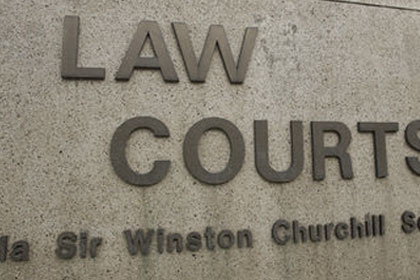The reality of today’s legal system is that the cost of litigation can quickly exceed the recovery sought. Between legal fees and the investment of their own time in the many procedural steps that can come with a law suit, I often advise my business owner clients to carefully consider whether these costs are justified by the desired outcome, and whether a “win” will really have accomplished anything. For example, before bringing a claim in Alberta’s Court of Queen’s Bench you must consider the cost of preparing the Statement of Claim, filing costs, procedural requirements for exchange of documents, questioning and being questioned by the other party (or parties), the inevitable correspondence back and forth, and the possibility of a trial, in addition to a number of other possible steps that cannot be foreseen. The procedural requirements combined with the uncertainty of litigation may suggest that unless the claim is substantial, it may not be advisable to proceed. Sadly this creates a window of harm that can be done to you or your business that is not “worth” doing anything about, unless one is prepared to proceed on “principal” alone.
Fortunately there is an option available that greatly reduces the procedural complexity and time to reach a resolution. Alberta’s Provincial Court, or “small claims court” as it is sometimes called, offers prospective claimants a simplified process to bring and prosecute a claim up to $25,000.00. In short, the process is commenced by the filing of a “Civil Claim” document. This outlines the parties involved, the specifics of your claim, and the damages sought. Once served on the defendant(s), each party will be given 20 days to file their defence, called a “Dispute Note”, and possibly a counterclaim. Each of these documents are relatively simple to complete and are readily available at the Edmonton Courthouse.
Provided the defendant has filed its Dispute Note, you will most likely be contacted by the court clerk to schedule a pre-trial conference. A pre-trial conference is a meeting between the parties (and their lawyers if applicable) and a judge and is designed to bring the parties together, explore the issues at play, and ideally encourage settlement. In my experience the judge will typically permit each party to present in brief their side of the story, and then engage in a discussion to bring the parties together. This is often accomplished by asking questions of each side to help them see the perspective of the other party, identify the strengths and weaknesses in their own arguments and understand the requirements to proceed if a settlement is not met.
If no agreement can be reached, the parties may be left with an order directing the exchange of further information and/or setting out a path toward trial. The judge who conducts your pre-trial cannot preside over the trial, so speak openly and do not be afraid to consider a compromise. Your efforts will not bias the judge at trial as it will not be him/her who makes a final decision.
The entire process from filing of the Civil Claim, to pre-trial, to trial generally moves much more quickly than a Court of Queen’s Bench claim, is less costly, and far less complex in terms of procedural steps. The trade-off is that the value that may be recovered is capped at $25,000, the exchange of information is less thorough and you may be surprised with what comes out in the process.
If you elect to go this route, I can give a few tips from experience. First, the procedure may be simpler, but the legal issues are the same no matter what court level you are in. It is wise to consult a lawyer before you select your venue to ensure you have adequately considered all aspects of the matter, the issues at play, all possible damages, any counterclaim exposure and are generally looking to the correct court. You may even consider retaining a lawyer on a limited basis to assist with the preparation of documents, arguments and research as needed. You can still represent yourself in the proceeding but having this background assistance is a way to improve your preparedness at a reduced cost.
Second, once you are underway, remember that it is your burden to prove your claim. Gather whatever evidence you can to support the accuracy of your facts and damages and do not assume anything is “obvious”. Remember the judge (at pre-trial and trial) is new to your matter and the more clearly you present your case and the better it is supported by evidence the better.
On several occasions I have encountered the other party flatly denying something that seems clear from my client’s perspective and wasn’t expected to be at issue. Be prepared for the defendant to deny conversations, agreements, and even their own actions and expect to have to prove everything. There is no harm in being too prepared. Being able to refute or discredit the other party’s claims is critical.
Suing or being sued is a significant but all too common occurrence in business and life. Being aware of less costly and more efficient options can be advantageous, but remember it is always best to seek out legal advice before you proceed, and once you do, do not to scrimp on preparation. Good luck!
